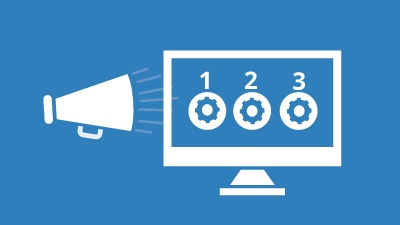4 Easy Steps to Automated Data Capture Success

As a menial task, data capture through manual data entry is a dangerous process—slow, costly, and prone to errors. Despite its problems, it was once the only way to capture data from physical sources, such as documents and receipts.
Barcoding is a stopgap but not a final solution. Modern enterprise resource planning (ERP) applications like Acumatica have the potential to use automated data capture to make those problems a thing of the past.
Acumatica Manufacturing Edition provides 4 steps to success for businesses looking to roll out automated data capture (ADC). The benefits are huge: boosted efficiency, monetary savings, minimal errors, and streamlined business processes.
Technologies
The evolution of automated technology for data capture is a long and storied one, including solutions such as:
- Barcoding and UPC scanners
- Radio frequency ID (RFID)
- PLC machine interface
- AI and machine learning
Acumatica understands the technological race never ends and iterates at all times, with the goal of the most return for the fewest mistakes — to maximize customer satisfaction.
The Acumatica platform can interface with all four technologies listed above and many more, including:
- Embedded management for documents
- Easy-integration RFID tags
- Out-of-the-box barcoding automation
- Optical Character Recognition (OCR) for document management
- Warehouse Management Systems which integrate multiple technologies
- Voice-Directed Warehousing (VDW) for a streamlined translation process
- Manufacturing Execution Systems to manage internal systems
- Time capture and payroll management systems
- Mobile device integration to make bulky scanners a thing of the past
- External data sources like robotics and machine scanners
Acumatica Manufacturing Edition, like all Acumatica products, is built with artificial intelligence and machine learning in mind. Automated processes make it easy to iterate and upgrade automated data capture.
Assess
After your business takes a full inventory of the technologies available to it, it must recognize its current stage in its ADC journey. Those just starting out implement a few basic technologies, while those further alone take advantage of several advanced processes:
- Beginners scale up from paper-based operations with limited barcoding capture
- Novices combine barcode, OCR, RFID, timeclock, and mobile tech
- Professionals automate with a variety of technologies and possess some higher-end ADC integrated systems already
- Experts tie everything together using advanced warehouse management systems and manufacturing execution systems with artificial intelligence
Once you and your business understand where you stand, it’s time to begin a plan for the future.
Strategize
A successful plan is one laid out in advance with clear goals for both endpoints and a set time to execute. It begins with a review of your ERP platform, which acts as the underlying foundation for the entire ADC development.
You must know which technologies it can integrate with, which it cannot, and which work best with the technologies the business plans to use.
Then, you move into research. Businesses must understand the strategies and technologies they plan to use and the results of their previous projects, as well as the data transactions they intend to automate. Clear goals are easier to meet and help you know when the project is done.
Prioritization comes next. You must analyze the costs and benefits of each implementation and determine which brings the most value for the least cost. Businesses in different stages should have different priorities:
- Beginners should start small to get a basic framework going
- Novices should look to expand their current investments
- Professionals and experts should apply more advanced technology to their current processes
The last stage is planning. It involves thorough documentation that includes each initiative’s goals, the technologies it will use to get there, and most importantly, a timeline for completion. Your plan should also include a clear set of step-by-step instructions to lay out how the program intends to reach its endpoint.
Execute
Like the other stages, this one can be further broken down into key parts: Preparation, Go-Live, Review, and Continuous Improvement.
Each step is pretty self-explanatory. Preparation involves all of the backend development. Go-live features the execution of the implementations for the first time, and review focuses on immediate problems and ways to address them.
The last stage, continuous improvement, is never truly finished. A business must analyze its solutions as often as it is cost-effective to do so, so it can better understand what needs improvement and how those improvements can be made.
Learn More: What Every Manufacturer Should Know About Automated Data Capture
Don’t let paperwork and manual data entry eat up time and budget that could be better spent on innovation and customer service. Download What Every Manufacturer Should Know About Automated Data Capture to find out how you can:
- Get the most out of a wide range of automated data capture technologies.
- Chart your journey to greater automation—and higher profits.
- Start simple with automation projects that deliver a “quick win.”
- Steer your implementation through four phases for a successful go-live.
- Drive efficiency through your manufacturing processes with Acumatica.
- Click here to download now.
-
Efficient Automation with Acumatica and Cloud 9 ERP Solutions
As a Gold Certified Acumatica Partner, Cloud 9 ERP Solutions is a leading provider for mid-scale businesses looking to expand their ERP options. With powerful integration options that make it easy to automate the movement of thousands of dollars of product through a warehouse, Acumatica is the right choice to drive efficiency.
Request a demo today to see what Acumatica can do for you and your business.



